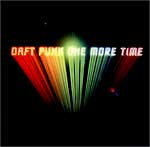by Shawna James
MTV exploded onto the music scene in the early eighties and has hence succeeded in popularizing the music video.
"It turns out video now makes the radio star thanks to that fateful day back on August 1, 1981 when music ventured
into the realm of television," notes a CNN news report from 1998 (CNN.com).
Graduating from stark videos from the sixties and seventies that featured bands strumming away on gaudy sound
studio sets, MTV music videos incorporated story elements. But debunking the traditional role of music underscoring a
film's story, film's role in the music video was to support the music - a crucial difference between music videos and
other forms of film. New and exciting ways to film a song's story or essence quickly developed so that music stars would
stand out. A video's originality could lead directly to the popularity of a song, but the song always took precedence.
"Music videos soon became the most innovative stuff on TV," continues the CNN report. "Some, like A-Ha's 'Take on Me'-which
stepped between reality and the world of illustration-set new standards in special effects and animation."
The use of animation in music videos immersed recording artists in whole new worlds, almost mystifying musicians
beyond their stage personas and setting some apart from those musicians content with merely filming their band in mid
performance. As the race to top the charts ensues, producers search for animation innovations to distinguish artists
and sell more records. Thus, the avaricious pursuit of big record labels has inadvertently contributed to the
development and popularization of various styles of animation.
The evolution of animation in music videos is quite pronounced. It develops from A-Ha's aforementioned
"Take on Me" (where the characters fall into a line-drawn, black and white comic strip) to Paula Abdul's "Opposites
Attract," (where Ms. Abdul dances with an animated cat a la Gene Kelly and Mickey Mouse) to Michael Jackson's "Scream"
(infused with anime visuals and computer animation).
But the animation is still a slave to the song as far as the industry goes. "The video clips are there for
the promotion or popularization of the music not the visuals," states Sally Stockbridge in a paper on the
intertextuality of video music clips.
Perhaps Michael Jackson's "Scream" was the anime community's first popular venture into music videos (save for a
few artists throughout the eighties and nineties that would litter visual collages with anime imagery), but it only
represents the tip of the iceberg when it comes to anime in music videos.
A general internet search about anime music videos will inevitably lead to some form of the same information.
From About.com: "Within anime are many sub-cultures, and one of them is music videos. These tend to be created by
fans for fans, and you'll usually find them online or at anime conventions."
|

